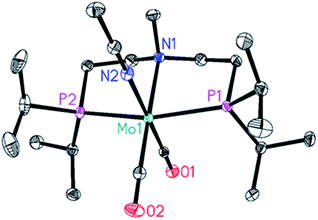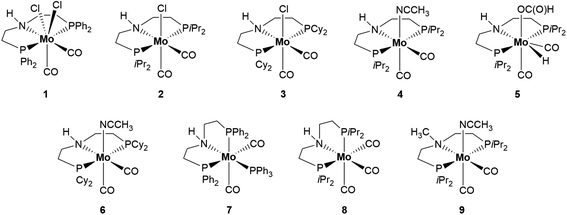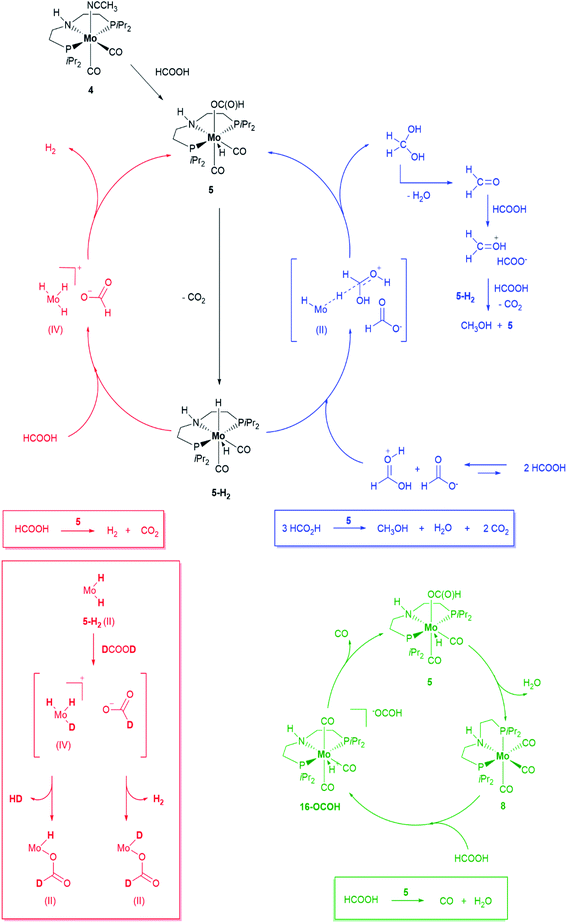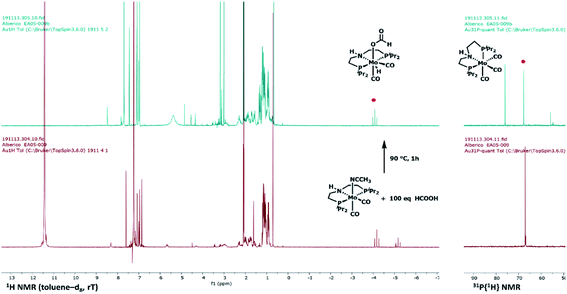 Open Access Article
Open Access ArticleCreative Commons Attribution 3.0 Unported Licence
Correction: HCOOH disproportionation to MeOH promoted by molybdenum PNP complexes
Elisabetta
Alberico
 *ab,
Thomas
Leischner
a,
Henrik
Junge
*ab,
Thomas
Leischner
a,
Henrik
Junge
 *a,
Anja
Kammer
a,
Rui
Sang
*a,
Anja
Kammer
a,
Rui
Sang
 a,
Jenny
Seifert
a,
Wolfgang
Baumann
a,
Jenny
Seifert
a,
Wolfgang
Baumann
 a,
Anke
Spannenberg
a,
Kathrin
Junge
a,
Anke
Spannenberg
a,
Kathrin
Junge
 a and
Matthias
Beller
a and
Matthias
Beller
 *a
*a
aLeibniz-Institut für Katalyse e. V., Albert-Einstein Straße 29a, 18059 Rostock, Germany. E-mail: henrik.junge@catalysis.de; matthias.beller@catalysis.de
bIstituto di Chimica Biomolecolare, Consiglio Nazionale delle Ricerche, tr. La Crucca 3, 07100 Sassari, Italy. E-mail: elisabetta.alberico@cnr.it
First published on 23rd November 2021
Abstract
Correction for ‘HCOOH disproportionation to MeOH promoted by molybdenum PNP complexes’ by Elisabetta Alberico et al., Chem. Sci., 2021, 12, 13101–13119, DOI: 10.1039/D1SC04181A.
The authors regret that in Scheme 2 of the original article, complexes 7 and 8 were drawn incorrectly. The solid-state structure of both complexes, as established by X-ray analysis, had been previously reported (7 (ref. 1) and 8 (ref. 2)). In both complexes, the PNP ligand adopts a facial tridentate coordination to molybdenum and not a meridional one, as erroneously shown in Scheme 2 of the original article. The correct ligand arrangements in the metal coordination sphere for complexes 7 and 8 are reported below in Scheme 1.
Please note that complex 8 is also shown in Scheme 4 in the proposed mechanism for HCOOH decarbonylation (green part), and in Fig. 2. In both cases, the correct structure for complex 8 is reported below in Scheme 2 and Fig. 1.
Furthermore, a mistake was made in the caption of Fig. 6, showing the solid-state structure of complex 9: the latter has been incorrectly described as a Mo(I)-hydride species {Mo(H)(CO)2(CH3CN)[CH3N(CH2CH2P(CH(CH3)2)2)2]}. The correct formula, in agreement with the X-ray structure, is as follows and is shown above in Fig. 2: {Mo(CO)2(CH3CN)[CH3N(CH2CH2P(CH(CH3)2)2)2]}.
 | ||
| Fig. 2 Molecular structure of {Mo(CO)2(CH3CN)[CH3N(CH2CH2P(CH(CH3)2)2)2]} 9. Displacement ellipsoids correspond to 30% probability. Hydrogen atoms are omitted for clarity. | ||
The Royal Society of Chemistry apologises for these errors and any consequent inconvenience to authors and readers.
Notes and references
- T. Leischner, A. Spannenberg, K. Junge and M. Beller, Synthesis of Molybdenum Pincer Complexes and Their Application in the Catalytic Hydrogenation of Nitriles, ChemCatChem, 2020, 12, 4543 CrossRef CAS.
- T. Leischner, A. Spannenberg, K. Junge and M. Beller, Molecular Defined Molybdenum–Pincer Complexes and Their Application in Catalytic Hydrogenations, Organometallics, 2018, 37, 4402 CrossRef CAS.
| This journal is © The Royal Society of Chemistry 2021 |



